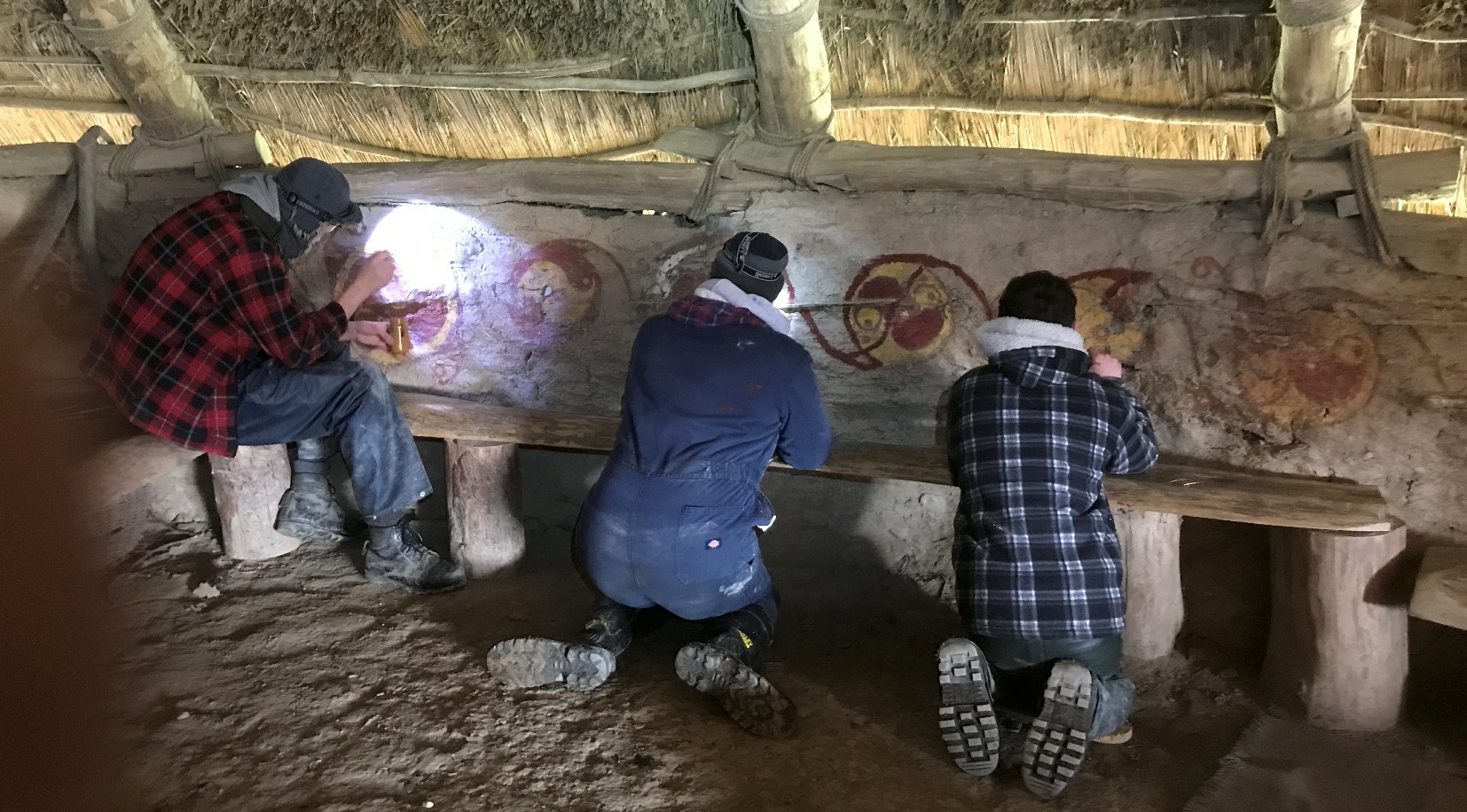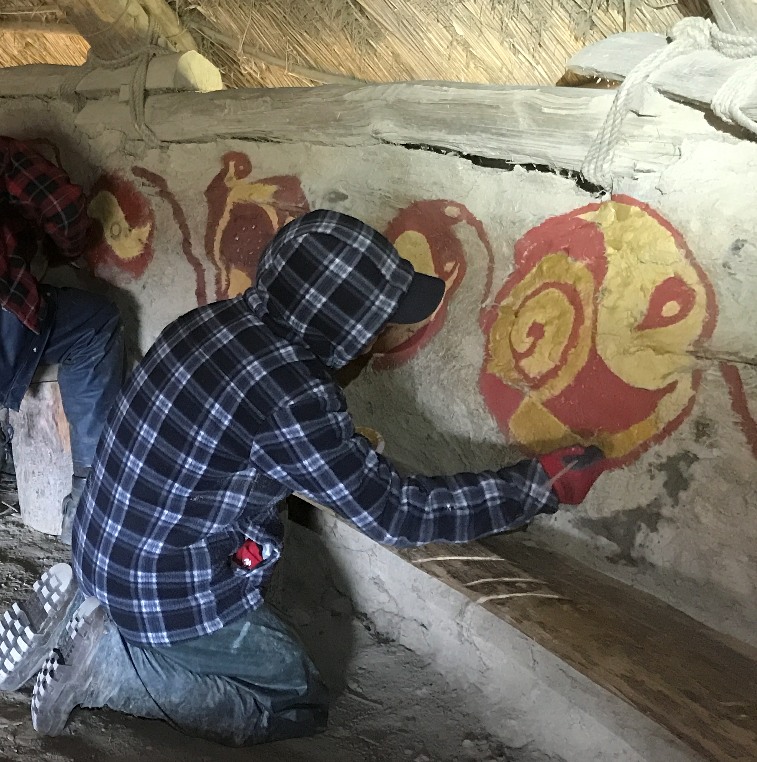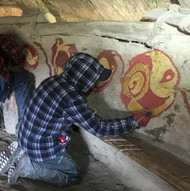Time Travelling Interior Designers
Posted by Celtic Sustainables on 15th May 2019

Oh to travel back through time and decorate an Iron Age Home. What an opportunity!
This is almost exactly what students from Coleg Plas Dwbl did when they were asked to design and paint Celtic Art in the interior of the roundhouses at Castell Henylls.
Castell Henllys Iron Age Village (Pembrokeshire) is a hill fort of Iron Age roundhouses. Originally expertly recreated in 2000, this year the roundhouses are being rebuilt – the perfect time for students to get fully immersed in history, crafts and design.

Coleg Plas Dwbl is part of the Ruskin Mill Trust. The Trust provides a rich and varied curriculum, primarily through hands-on learning, to neurodiverse students with complex learning needs aged 16 to 25.
Students, under the expert tutelage of Artist Linda Norris, began the design process by studying Celtic Art. Linda explained, “Celtic motifs and designs in Wales, although part of the wider Celtic tradition, are particular to Wales and certainly different to art found at the same time in Ireland, the rest of Britain and Europe”. It is this level of attention to detail that really makes this project stand out.
Like Interior Designers throughout the ages, once the Students developed their designs they communicated their concepts back to the client - in this instance Delun Gibby, Archaeologist for the Pembrokeshire Coast National Park - for approval.
Delun (now the Manager of the Site) told us; “We wanted the designs to be historically accurate but allow the students some flexibility of interpretation too. The motifs in the Chieftain’s House are more reflective of the era. In the Cook’s house, however, the Students were able to bring elements of their interests and personality to their designs albeit within the Celtic Art style.”
Visitors to the Cook’s house who are well versed in the world of computer games will notice elements like Pokémon Swords within some of the motifs.

Students painted their final concepts onto the interior clay walls of the Roundhouses. Again, historical accuracy was key. The designs were outlined using charcoal and the students made the paint themselves.
Paint during the Iron Age was made of local pigments mixed with clay, earth and binders (such as blood and urine). For hygiene, and many other reasons, the students used a contemporary organic binder instead.
Delun chose a range of pigments for the students to use that would have been consistent with era; Red Iron Oxide, Yellow Iron Oxide and a Grey Ochre from Coloured Earth Pigments at Celtic Sustainables in Cardigan. She was also lucky to be able to source some burnt orange clay from a recent archaeological dig at Nevern Castle which could be accurately dated to 1195 when the Castle burnt down.
“There is a really lovely range of colours available from Coloured Earth, so many bright and vibrant pinks and blues that I would have loved to use, but in the end we stuck with more technically correct reds, yellows, orange and grey. The restricted palette worked really well” said Delun.
The paint ingredients were mixed with water until the desired consistency and stickiness was achieved.
“I enjoyed sourcing and mixing the pigments, it was like having my own chemistry set! “
commented Student L, aged 16.
The circular Celtic motifs are carefully linked to each other, the individual designs combining to orbit around the interior wall. Daylight inside the steeply roofed roundhouses is limited, but the colours and designs really stand out. One could imagine them almost dancing around the walls in the flickering firelight.

But what does the client, Delun, think of the completed work? “The students have really transformed the space with their art. Their vibrant designs help stop visitors thinking about the Iron Age as an era of mud and drudge and enables people to imagine a world of emerging sophistication and colour. I couldn’t be more pleased”.
The finished result is beautiful, but don’t take my word for it. You can visit the Roundhouses at Castell Henylls any day during the Spring and Summer, open from 10am to 5pm (
www.castellhenllys.com).
To find out more about Linda Norris and her work as a painter and glass artist visit
www.linda-norris.com and the College at ww.rmt.org/plasdwbl/
If you are inspired to make your own paints visit our non-toxic Coloured Earth pigment shop pages.


